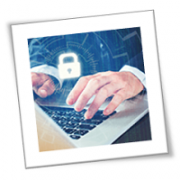While all types of fraud pose serious challenges, identity fraud is one of the most potent, and consumers must take extra care to detect and avoid it. People need to educate themselves on protecting their personal information, but many might feel they don’t know where to begin. Five main steps can be taken to guard against identity fraud and stop fraudsters and scammers from obtaining personal information or accessing accounts.
Beware of phishing
Phishing emails are a vital tactic for scammers and have developed beyond the clumsy, poorly written-efforts of the past. However, many still contain tell-tale signs of a scam, such as lousy formatting and unofficial email addresses. Phishing emails are designed to convince consumers to click on a malicious link, so consumers should avoid following links they do not recognize. Pay extra attention to an email that calls for immediate action, such as requiring payment to keep your energy on; scammers know that consumers are more likely to make a mistake if there’s urgency.
The best way to root out the fakes is to independently check the information by logging into personal accounts on the company website—companies will often post a warning on their website if they are aware of the scam email. Smishing, where phishing is conducted via a text message, isn’t a new threat but has evolved during the COVID-19 pandemic and represents another avenue where consumers need to be hyper-vigilant.
Activate two-factor authentication
Many online accounts offer two-factor authentication, which can help to prevent online account takeover. Text messaging is the most popular second factor, but this is also vulnerable to takeover, so individuals should choose an alternative factor if one is available.
Sign up for activity alerts from financial institutions
Signing up for activity alerts with bank or credit card companies can alert consumers to any suspicious activity associated with their accounts. People are notified straight away, and this can prevent any further fraudulent charges or withdrawals. Do not delay reporting suspected fraud to your bank, and ask about the possibility of closing the account in question.
Set up identity and credit monitoring
Individuals can sign up for an identity and credit monitoring service that will warn them if their data is at risk. Due to personal information being traded on the dark web, monitoring services focus on places where data is known to be bought and sold and will send alerts if personal data is identified. Credit monitoring services will notify individuals of any changes to their credit profile, such as new trade lines or hard credit inquiries. If individuals suspect fraudulent use of their information, a professional can assess the extent of the fraud and assist with identity restoration.
Follow password security best practices
There is a lot of advice available on how to create strong, unique passwords for every account. However, with the average person having 70-80 accounts, it can be difficult to remember them all, leading many people to reuse passwords. Installing a password manager can help you generate and store passwords for all your accounts on your devices. Although using common passwords like “QWERTY” or your pet’s name is not safe, it can suggest a nearly impossible alternative to guess.
The most important thing to remember is that there is no single solution to ensure complete protection against identity theft. The best thing you can do is to stay vigilant and use caution. By adopting the layers of security discussed above, you can give yourself the highest level of protection against a threat that is certain to become increasingly dangerous in the future.
If you are looking for an expert to help you find the best solutions for your business talk to GCInfotech about a free technology assessment
Published with consideration from TechRadar SOURCE




